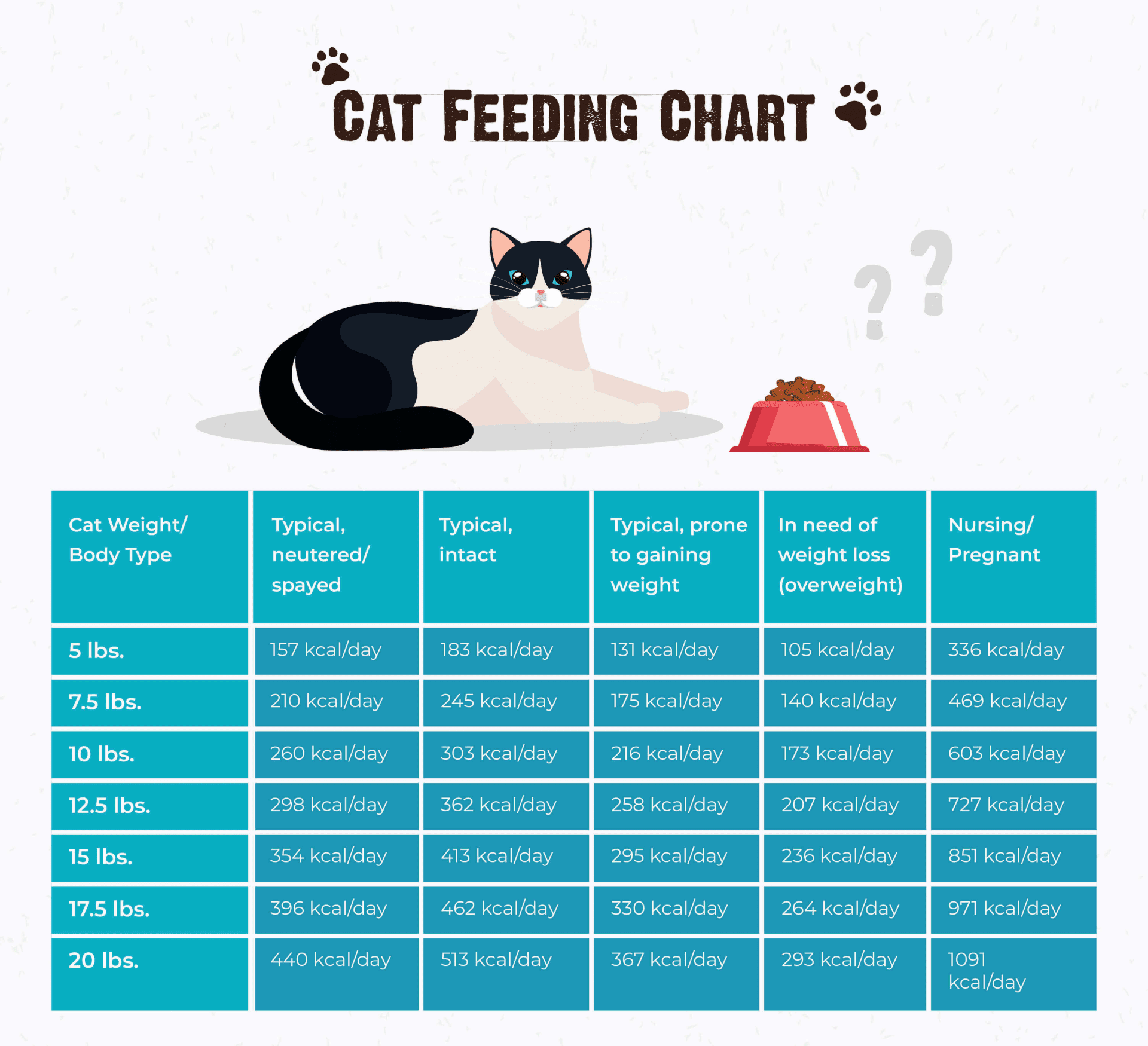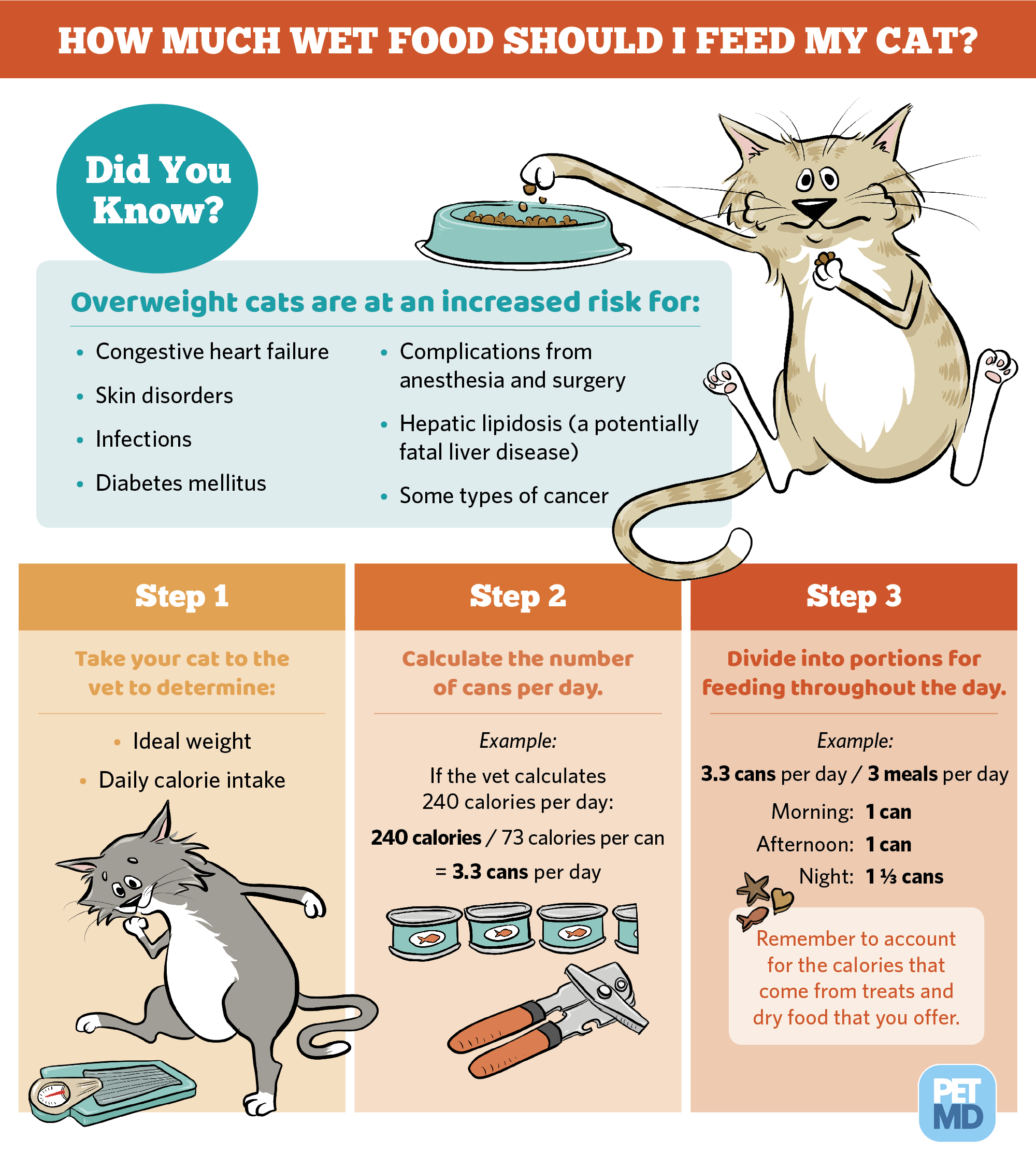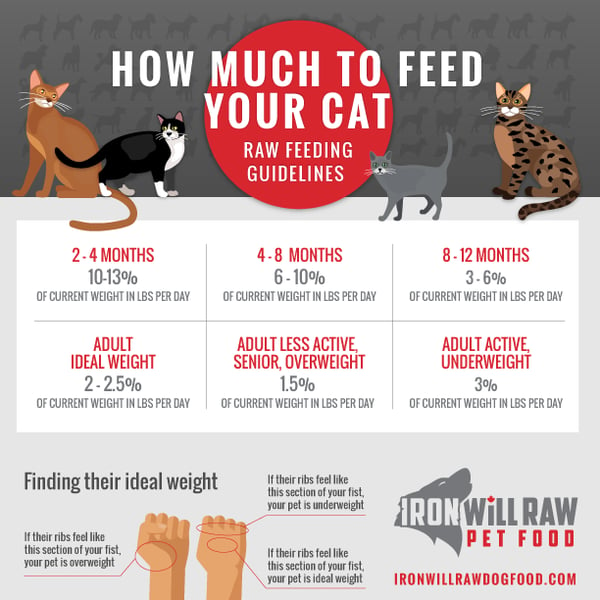How often should you feed your cat? For adult cats, feeding twice a day is usually sufficient.
Kittens need more frequent feedings, about four times a day. Feeding your cat the right amount is crucial for their health. Overfeeding can lead to obesity, while underfeeding can cause malnutrition. Cats have different dietary needs based on their age, size, and activity level.
Understanding these needs helps ensure your cat stays healthy and happy. This blog post will guide you through the ideal feeding schedules for cats at different life stages. We’ll also discuss how to adjust their diet as they grow and change. Whether you have a kitten, adult cat, or senior feline, we’ve got tips to help you make the best feeding choices.
Feeding Frequency Basics
Knowing how often to feed your cat is important for its health. Feeding frequency can depend on your cat’s age, health, and lifestyle. This guide will help you understand the basics of feeding your feline friend.
Age And Life Stage
A cat’s feeding needs change as they grow. Here’s a breakdown:
| Life Stage | Feeding Frequency |
|---|---|
| Kitten (up to 6 months) | 3-4 times a day |
| Junior (6 months to 2 years) | 2 times a day |
| Adult (2 to 7 years) | 1-2 times a day |
| Senior (7+ years) | 2 times a day, smaller portions |
Daily Meal Recommendations
Feeding your cat the right amount is as important as the frequency. Here are some tips:
- Kittens: They need frequent meals to support their growth. Feed them 3-4 times daily.
- Junior cats: Reduce meals to 2 times a day. They are more active and need balanced nutrition.
- Adult cats: Once or twice daily is enough. Ensure the meals are nutritionally complete.
- Senior cats: Feed them twice daily with smaller portions. Their metabolism slows down, so they need less food.
Remember to provide fresh water at all times. Cats need hydration to stay healthy. Use a balanced cat food that fits your cat’s age and health.

Credit: rawznaturalpetfood.com
Kitten Feeding Schedule
Understanding the kitten feeding schedule is vital for their growth. Kittens have different nutritional needs compared to adult cats. Feeding them correctly ensures they grow into healthy adult cats.
Nutritional Needs
Kittens need a diet rich in proteins and fats. This is because they are growing rapidly and need extra energy. Their food should also contain essential vitamins and minerals. Look for kitten-specific food, as it is formulated to meet these needs.
Here are some key nutrients your kitten needs:
- Protein: For muscle growth.
- Fats: For energy and healthy skin.
- Calcium: For strong bones and teeth.
- Vitamins: For overall health and immunity.
Meal Timing
Young kittens need to eat more frequently than adult cats. This is because their stomachs are small, and they can’t eat much at once. A proper feeding schedule is essential.
Here is a simple guide for a kitten feeding schedule:
| Kitten Age | Meals per Day |
|---|---|
| 0-4 weeks | Every 2-3 hours (milk) |
| 4-8 weeks | Every 4-5 hours (soft food) |
| 2-3 months | 4-5 meals |
| 3-6 months | 3-4 meals |
| 6-12 months | 2-3 meals |
Stick to a consistent schedule. This helps your kitten develop good eating habits. Always provide fresh water for your kitten. Hydration is just as important as food.
Pay attention to your kitten’s weight and health. Adjust the feeding schedule if necessary. Consult your vet for personalized advice.
Adult Cat Feeding Schedule
Understanding your adult cat’s feeding schedule is essential for their health and happiness. A well-planned feeding routine ensures your cat gets the right nutrients. This also helps maintain an ideal weight. Let’s explore some important aspects of an adult cat’s feeding schedule.
Portion Control
Portion control is crucial in managing your cat’s weight. Overfeeding can lead to obesity, while underfeeding can cause nutritional deficiencies. Use a measuring cup to ensure accuracy. Follow the guidelines on the cat food package. This table provides a general idea:
| Cat’s Weight | Daily Food Amount |
|---|---|
| 5 lbs | 1/4 cup |
| 10 lbs | 1/2 cup |
| 15 lbs | 3/4 cup |
Consult your vet for personalized advice. They can help determine the exact portion size based on your cat’s specific needs.
Meal Frequency
Meal frequency can affect your cat’s metabolism and energy levels. Most adult cats do well with two meals a day. This mimics their natural hunting behavior. Split the daily portion into two servings:
- Morning
- Evening
Some cats prefer smaller, more frequent meals. In such cases, you can divide the daily portion into three or four smaller meals. Ensure these meals are evenly spaced throughout the day. This keeps your cat’s energy levels stable.
Remember, consistency is key. Stick to a regular feeding schedule. This helps your cat know when to expect their meals. It also supports their digestive health.
Senior Cat Feeding Tips
As cats age, their nutritional needs change. Feeding a senior cat requires attention to their specific health requirements. Below are some essential tips to keep your senior cat happy and healthy.
Health Considerations
Senior cats may face health issues like kidney disease, diabetes, or arthritis. These conditions require specific diets. Consult your vet to understand your cat’s needs. They may recommend a diet with lower protein or specific supplements.
Weight management is crucial for older cats. Obesity can worsen health problems. Monitor your cat’s weight and adjust their diet accordingly. Older cats might also have dental issues. Soft or wet food can be easier for them to eat.
Adjusting Meal Plans
Senior cats often benefit from more frequent, smaller meals. Instead of two large meals a day, try feeding them three to four smaller ones. This can help manage their energy levels and digestion.
Keep an eye on their appetite. A sudden change could indicate a health problem. Ensure they have access to fresh water at all times. Dehydration is common in older cats.
| Age Range | Meals Per Day | Food Type |
|---|---|---|
| 7-10 years | 2-3 | Mixed (dry and wet) |
| 10-15 years | 3-4 | Mostly wet |
| 15+ years | 4+ | Soft or wet |
Consider the quality of the food. Premium senior cat foods often have the right balance of nutrients. Look for options with high-quality protein and low phosphorus levels.
- Monitor weight: Regularly check your cat’s weight and body condition.
- Hydration: Ensure they always have fresh water.
- Quality food: Choose premium senior cat foods.
By following these tips, you can ensure your senior cat stays healthy and happy.
Special Dietary Needs
Feeding your cat can be straightforward, but some cats have special dietary needs. These needs can arise due to various reasons such as medical conditions or age-related changes. Understanding these needs can help you ensure your cat stays healthy and happy.
Medical Conditions
Cats with medical conditions require special diets. Some common conditions include:
- Diabetes
- Kidney disease
- Food allergies
A cat with diabetes needs a consistent feeding schedule and a diet low in carbohydrates. For cats with kidney disease, a diet low in protein and phosphorus is recommended. Food allergies may require a hypoallergenic diet to avoid triggering symptoms.
Prescription Diets
Veterinarians often recommend prescription diets for cats with specific health issues. These diets are formulated to address particular health problems. Some examples include:
| Condition | Recommended Diet |
|---|---|
| Urinary issues | Low magnesium diet |
| Weight management | Low-calorie diet |
| Joint problems | Diet with glucosamine |
Prescription diets are not available over the counter. You must get them from a veterinarian. Always consult your vet before changing your cat’s diet.
Wet Food Vs. Dry Food
Deciding between wet food and dry food for your cat can be challenging. Each type has its advantages and disadvantages. Understanding the nutritional differences and feeding guidelines will help you make the best choice for your feline friend.
Nutritional Differences
Wet food and dry food offer different nutritional profiles. Wet food has higher moisture content, which helps keep your cat hydrated. It is also more palatable, making it a good option for picky eaters.
Dry food is convenient and can be stored longer. It typically contains more carbohydrates than wet food. This can be beneficial for active cats needing more energy.
Below is a comparison table highlighting the main differences:
| Aspect | Wet Food | Dry Food |
|---|---|---|
| Moisture Content | High | Low |
| Storage | Short-term | Long-term |
| Palatability | High | Moderate |
| Carbohydrates | Low | High |
Feeding Guidelines
Feeding guidelines depend on your cat’s age, weight, and activity level. Here are some general tips:
- Kittens need frequent meals. Four times a day is ideal.
- Adult cats can be fed twice a day. Morning and evening work well.
- Senior cats benefit from smaller, more frequent meals.
Use the following steps to determine the right amount of food:
- Check the food label for recommended portions.
- Adjust based on your cat’s weight and activity level.
- Monitor your cat’s weight and adjust as needed.
Combining both wet and dry food can offer the benefits of both. It provides hydration and convenience, ensuring a balanced diet for your cat.
Free Feeding Vs. Scheduled Meals
Feeding your cat can be a complex decision. Two common methods are free feeding and scheduled meals. Each has its own set of advantages and disadvantages. Understanding these can help you make the best choice for your feline friend.
Pros And Cons
Both free feeding and scheduled meals have their unique pros and cons. Below is a table highlighting some of the key points:
| Method | Pros | Cons |
|---|---|---|
| Free Feeding |
|
|
| Scheduled Meals |
|
|
Behavioral Impact
Feeding methods can impact your cat’s behavior. Free feeding may lead to less aggressive behavior around food. Cats won’t feel the need to compete for limited resources. But, it can also cause boredom-related eating. This might lead to weight gain.
Scheduled meals can create a structured routine. This helps your cat know when to expect food. It may reduce begging and food aggression. Yet, some cats may become anxious if meals are not on time.
Choosing the right feeding method depends on your cat’s needs. Consider their health, behavior, and your schedule. Both methods have their benefits and drawbacks. Make an informed choice for a happier, healthier cat.

Credit: jasterluis.com
Monitoring Your Cat’s Weight
Monitoring your cat’s weight is crucial for maintaining their health. Proper feeding schedules play a key role in this process. It helps ensure your cat remains within a healthy weight range. Neglecting this can lead to various health problems.
Signs Of Overfeeding
Overfeeding can cause obesity in cats. Here are some signs to watch for:
- Weight gain: Noticeable increase in weight over a short period.
- Low energy levels: Your cat becomes less active and playful.
- Difficulty breathing: Heavy panting after minimal activity.
- Visible fat deposits: Fat accumulating around the abdomen and spine.
- Reduced grooming: Difficulty reaching certain areas due to excess weight.
Adjusting Portions
If you notice signs of overfeeding, adjusting your cat’s portions is essential. Here’s how:
- Consult a vet: Get a professional opinion on the ideal portion size.
- Measure food: Use a measuring cup to ensure accurate portions.
- Feed smaller meals: Offer smaller, more frequent meals throughout the day.
- Choose quality food: Opt for high-quality, nutrient-dense food.
- Monitor weight: Regularly check your cat’s weight and adjust portions as needed.
By monitoring your cat’s weight and adjusting portions as necessary, you can help maintain their overall health and well-being. Ensuring your cat receives the right amount of food at the right times is essential for their long-term health.

Credit: ironwillrawdogfood.com
Frequently Asked Questions
How Often Should I Feed My Cat?
Adult cats should be fed twice a day. Kittens need more frequent meals, typically three to four times daily.
What Is The Best Feeding Schedule For Cats?
The best feeding schedule is twice daily for adults. Kittens require three to four meals per day.
Can I Feed My Cat Once A Day?
Feeding once a day is not recommended. Cats benefit from two meals a day to maintain energy levels.
Should I Feed My Cat Dry Or Wet Food?
Both dry and wet foods have benefits. Wet food provides hydration, while dry food helps with dental health.
Conclusion
Feeding your cat the right amount is important. Monitor their weight and health. Adjust portions based on age and activity level. Consult your vet for personalized advice. Regular meals help maintain a happy and healthy cat. Remember, a balanced diet leads to a joyful pet.
Stay attentive to your cat’s needs. Always provide fresh water. Enjoy the bond with your feline friend. Happy feeding!